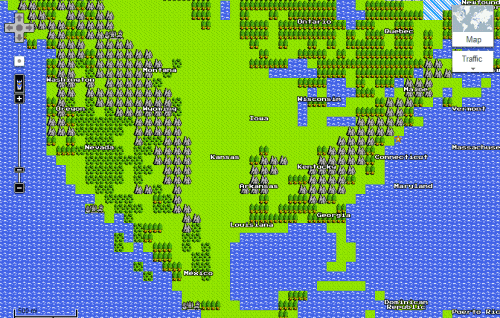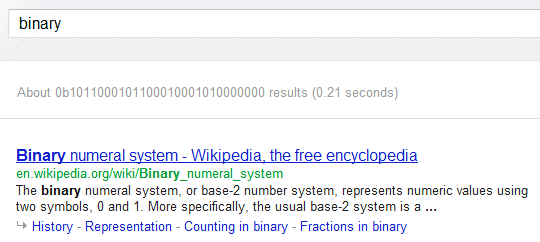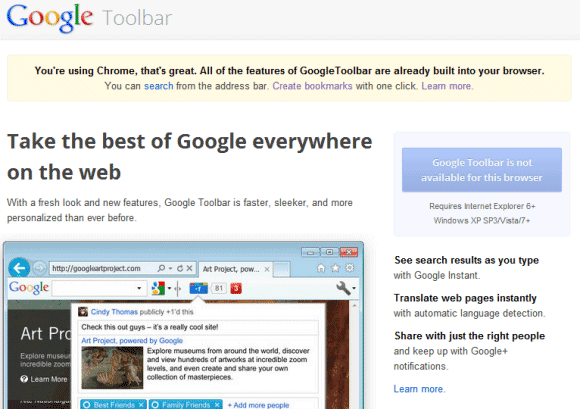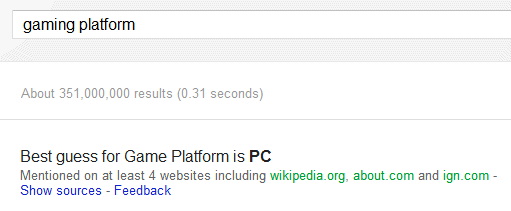The first hoax for this year comes from Google Japan: you can now try the 8-bit version of Google Maps. Just click the "quest" button in the regular Google Maps interface.
"Our engineering team in Japan understood the importance of maps on retro game systems. With the power of Google's immense data centers, and support from Nintendo and Square Enix, we were able to overcome the technical and design hurdles of developing 8-bit maps. Today, we're excited to announce the result: a version of Google Maps for NES, with beautiful low-res graphics, simple and intuitive controls, and a timeless soundtrack," explains Google.
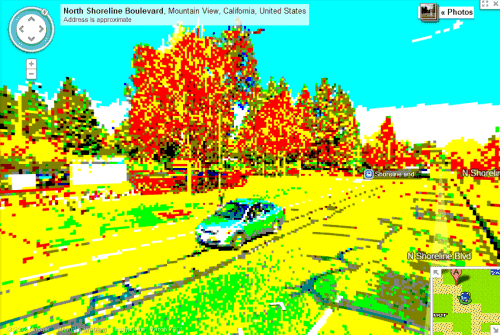
The 8-bit Google Maps hides some monsters from the Dragon Quest series.

Google Japan also came up with a simplified IME for Japanese (Google Translate) that only uses a single key: space.
Google China changed the search results page for [Qingming], but you'll only see the beautiful animated wallpaper if you use Chrome. "The Qingming Festival (...) is a traditional Chinese festival on the 104th day after the winter solstice (or the 15th day from the Spring Equinox), usually occurring around April 5 of the Gregorian calendar" (from Wikipedia).
"Use the Chrome browser, Google's search box, enter "Qingming", the results page is the past is not the same? Greeted by swaying willow branches, a symbol of spring in the air. "Green little Liulv the Yula have Qingming, the page will float to the surface ripples from time to time, and click a fish tail out of the water continued to click, but also do not like surprises! The bottom of the page are two cowboy, riding a piper playing in the back of a bull, quiet and lightly." (machine translation - Google China Blog)
Don't miss the underwater image search experience developed by Google China. It's so much fun to type your query.

Google Australia found a way to capture more Street View images for Australia: Google Street Roo. "Over the next four weeks, more than a thousand Big Red kangaroos will be equipped with a 360-degree head camera that will automatically capture images when the marsupial is on the move during daylight hours. The cameras on our Street Roo collection team will be powered by solar panels stitched into the back pocket of custom-made roo jackets. Images will be wired to Google in real-time. A GPS tracker embedded into the jacket will match the location of the kangaroo to ensure the image is accurately uploaded onto the new Street View layer."

Inspired by the Japanese IME and the Morse Code, Gmail's team introduces a new way to type on a mobile device. "Gmail Tap takes the keyboard from 26 keys to just two. Every letter of the alphabet is represented by a simple pattern of dots and dashes, and once you know them you can type without even looking at your screen. This makes it ideal for situations where you need to discreetly send emails, such as when you're on a date or in a meeting with your boss."
AdWords brings a new ad extension: click-to-teleport. "While features like call extensions and location extensions have aimed at solving the online to store marketing objective for multichannel advertisers, Click-to-Teleport shortens the offline conversion funnel by allowing a user to teleport directly to your business location by clicking on your search ad."

If you've already optimized your sites for mobile phones, you can now optimize them for rotary phones.

YouTube offers a way to enjoy your favorite videos even when you don't have an internet connection. The YouTube Collection lets you watch any YouTube video on DVD and you can still share your feedback.
Just click the "home" button from the YouTube player to watch a demo.

Chrome's engineers found a new way to multitask. "We call it Multitask Mode. Multitask Mode lets you have access to multiple mice at the same time, so you can make a chess move while you watch a dance move, or draw a horse while you draw on a friend for relationship advice. Chrome can handle as many mice, touchpads, styli, joysticks, trackballs, and other pointing devices as you can plug into your computer, so you and your friends can browse dozens of sites at the same time."
Jargon-Bot for Google Apps translates business jargon into plain English. " Jargon-Bot has been integrated across the entire suite of Google Apps so that next time you are on an IM chat with your manager, it will help you recognize and say no to unrealistic expectations. When you receive an e-mail from your supplier, Jargon-Bot won’t let you get ripped off by demystifying the fine print," explains Google.
Make sure you try the interesting new options from Google's search sidebar that let you find pages from the past: "Jurassic Era", "Victorian Era", "Enlightenment", "Once Upon a Time" and even tomorrow's pages.

Image Search lets you find images from "the Gilded age".

Here are the queries used by Google:
* Hadean Era: just us rocks, move along
* Jurassic Era: It's a UNIX system, I know this!
* Cretaceous Era: "dinosaur repellent" OR "time machine repair"
* New Kingdom Era: tetrahedral real estate listings
* Once Upon A Time: Poisoned Apple Antidotes
* Enlightenment: ego quaerere ergo ego sum
* Victorian Era: this query served from Google's Difference Engine cluster
* Past 5.391e-44 seconds [Planck time]: a photon passes, no new celebrity news, must refresh faster
* Tomorrow: todo: create tachyon web crawler
For even more search options, try Google Really Advanced Search. You can find pages with words "almost, but not quite entirely unlike" a word you enter, "this exact word or phrase, whose sum of unicode code points is a mersenne prime". You can narrow the results by font, textured background, "embarrassing grammatical faux pas" or "looping midi music".

Google's weather OneBox is now more powerful and it lets you change the weather. "Don't like the weather? Now you can change it in your region by selecting from the dropdown to change precipitation and setting your own temperature. Please notice, after submitting it takes approximately 45 minutes until your weather changes take effect," informs Google.

There's also a new Cloud API for the App Engine which lets you "gain cloud coverage in locations around the globe within minutes".
Google Analytics promise to add support for interplanetary reports, just in case your site has visitors from another planet. "While currently you only get a partial picture of website visitor location, we want to expand beyond Earth to help you understand visitor activities from neighboring stars and planets. You’ll also be able to drill down on each planet to see greater detail. For example, which colony or outpost your visitors came from similar to the city drill down available for Earth today."
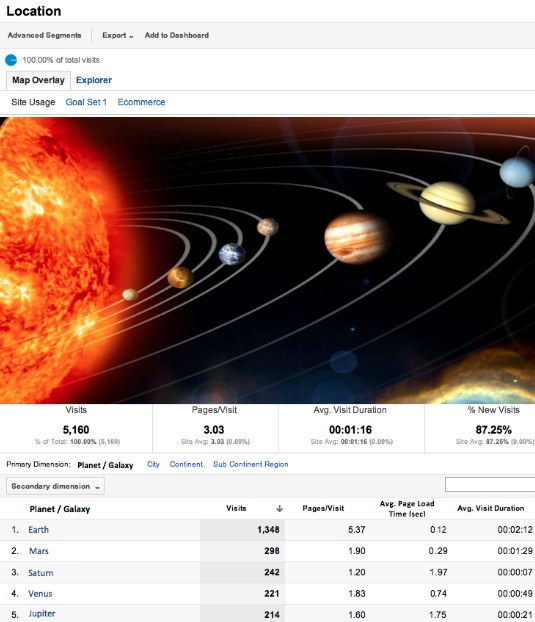
Self-driving cars are becoming a reality, but happens if you bring self-driving cars to NASCAR? "Our autonomous cars have now been test-driven (or rather, test-ridden) for more than 200,000 miles without a single machine-caused mishap. And today we're moving the project one great leap forward with Google Racing, a groundbreaking partnership with NASCAR to help self-driving vehicles compete in the world of stock car racing."

Google is bringing an ultra high-speed fiber network to Kansas City, but also releasing a Fiber Bar. "Google Fiber starts with 100 times more fiber than any source of fiber available today. Tested in labs across our Mountain View campus, we found that in just the right synthesis, psyllium and vitamins C and D morph into a byproduct we have coded as Fiberlicious. This smarter fiber delivers just what the body needs to sustain activity, energy and productivity up to 100 times more than you have experienced before."
{ Thanks, everyone. }
